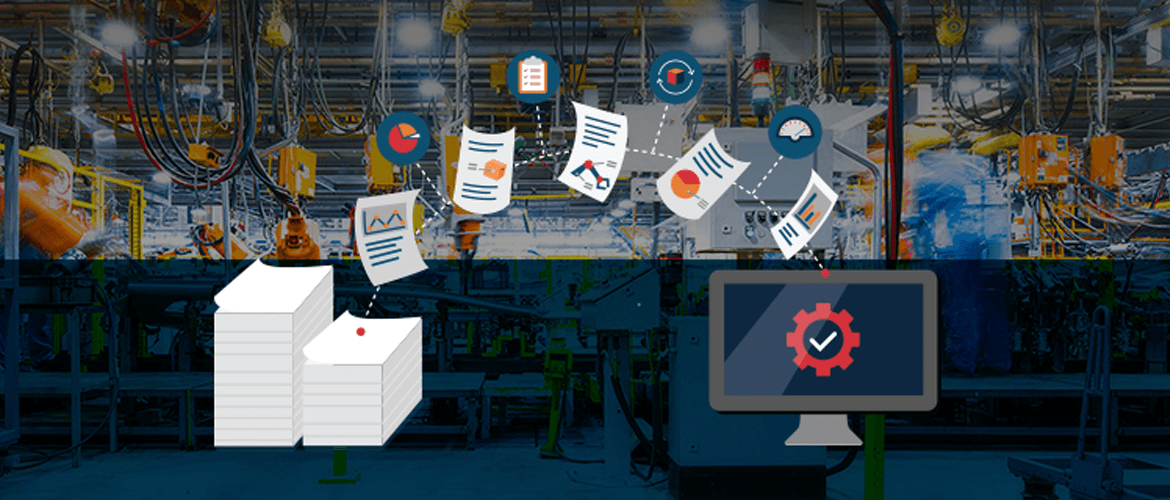Not so long ago, traceability was predominantly a function required only by certain quality sensitive manufacturers, particularly those within the automotive, medical, military and aerospace sectors. Principally in these market segments, production was, and indeed still is, impossible without strict adherence to legal requirements (RoHS, WEEE, Congressional Tread Act, etc.) and with it the necessity for scrupulous measures and processes that track and record each manufacturing step to achieve compliance.
No doubt there have always been a myriad of processes applied by various manufacturers even outside of those segments that helped track material flow within a production to aid planning and offer relatively simple traceability capability. Often these processes, however, required time-consuming administrative tasks or very simple automated solutions. In principle these measures were introduced to manage costly product recalls – in order to be able to react after an issue had been identified. In practice, however, compared to today’s more sophisticated solutions, these were relatively primitive, labor and time intensive standalone systems, which required a large amount of data storage capacity and space and consequently did not provide fast and efficient industrial traceability solution.
When the economic downturn hit in the early part of the century, the entire electronics manufacturing industry, from capital equipment producer to software and materials provider, focused on developing and offering the most cost effective solutions that offered speed, precision and flexibility. Strong pressure from customers to reduce costs across the supply chain triggered a shift within the industry, resulting in a trend to move production facilities from West to East to low-cost countries such as China. And still today, cost of production is one of the key drivers of the industry. But there’s even more complexity now…
Globalisation, miniaturisation as well as the trend to outsource parts or all of the production process, have created a whole new set of challenges. Today manufacturing often takes place in ‘foreign’ countries. Consequently, different laws, different cultures, and different reputations, govern quality control and the result thereof. Traceability in manufacturing has become a vital function for brand protection through active fault-recognition in order to avoid costly recalls. Coupled with the proliferation of counterfeiting, manufacturing traceability solutions have certainly moved up the requirement list for many manufacturers today. Although still often viewed as a separate function required only for specific customers and products, many recognised early on that implementation of compliance, test and control systems beyond any legal requirement could also offer a competitive advantage.
Today, test and control solutions have quickly developed into advanced and intelligent automated systems that check each component and every manufacturing process to ensure required quality and the prevention of faults. No longer is traceability a separate function and end-goal, but a bi-product of an efficient control-system. Manufacturing Execution Systems (MES) connect to Enterprise Resource planning systems (ERP) and offer factory-wide qualitative and cost reducing advantages through improved inventory management, material flow, quality control, order processing & tracking as well as database management, etc.
With Industry 4.0, a new concept of organising and controlling the complete value chain over the entire product lifecycle, we are now making our first steps towards the fourth industrial revolution. Cyber Physical Systems (CPS), will now be required to seamlessly connect people, objects and currently still autonomic systems to create dynamic, real-time optimised and self-organising, cross company value-chains. In tomorrow’s manufacturing plants all products, components, materials and processes will be intelligent and form the basis of the so-called Smart Factory.
Every component will be individually identifiable and can be located up and down the value chain. History, current status, as well as alternative and more efficient production paths can be easily and directly recognised and adapted.
Particularly with today’s complex manufacturing processes that are spread globally, a worldwide trace for each component and process needs to be ensured in order to guarantee safety and quality in the smallest detail. Information regarding origin, storage, state and location of materials, components and products will be instantly retrievable.
In reality of course it won’t be easy to achieve, as the different systems used by suppliers, producers, clients, right through to even recyclers will need to be compatible in order to be able to seamlessly communicate with one another. What is required is highly specialised software support and a radical rethink with regard to traditional control processes. Concepts such as ‘the internet of things’ (the interconnection of uniquely identifiable objects and devices within the existing Internet infrastructure), are already viewed and being developed as drivers for a forward looking production and further developments in this area offer exciting and infinite possibilities.
Looking back at the industry over the last 10 years, progress has certainly been fast and continues to gain speed, particularly in this immaterial virtual sphere, where people, machines, processes etc., seamlessly and invisibly need to communicate with each other and continuously have to adapt to past, present and future events. Factory-wide traceability solutions will come of age by effectively no longer being a mere requirement for certain manufacturers, but a resulting by-product of the entire production control process.
Sign up for our blog
Stay up-to-date on the latest in manufacturing trends, insights and best practices.





